In Rome, a walk along Via dei Fori Imperiali is definitely one of the best activities to do, both for those coming to the city for the first time and for locals. Walking in the heart of Rome, between the imposing structures of the Colosseum and the majestic hill of the Capitoline Hill, along the archaeological complex that embodies the very essence of ancient Rome, is always a fascinating experience for everyone since these ancient sites, witnesses of the power and magnificence of ancient Rome, are the fulcrum of a millenary history: every stone here tells an episode, a chapter of the political, religious and social life of the ancient city.
The fascination of the Imperial Forums lies not only in the Roman ruins, vestiges of the city that once was: it is also given by the stratification, since other buildings were built on the Forums in later eras that are now an integral part of this complex. How many times, however, walking along Via dei Fori Imperiali, especially if one is not a Roman or not much of a fan of the architecture of ancient Rome, have we found ourselves a bit bewildered, and perhaps unable to recognize this or that monument? From today this will no longer be a problem because we have put together this definitive guide to the monuments that can be seen from Via dei Fori Imperiali. Through the help of Google Street View, we imagined a walk from the Vittoriano to the Colosseum (and back, going up to Via San Pietro in Carcere to enjoy the view of the Roman Forum) and built a useful guide to recognize the monuments of the Roman Forum and the Imperial Forums. To open whenever you have a doubt about this or that monument, or to study first if you want to make a good impression with friends.
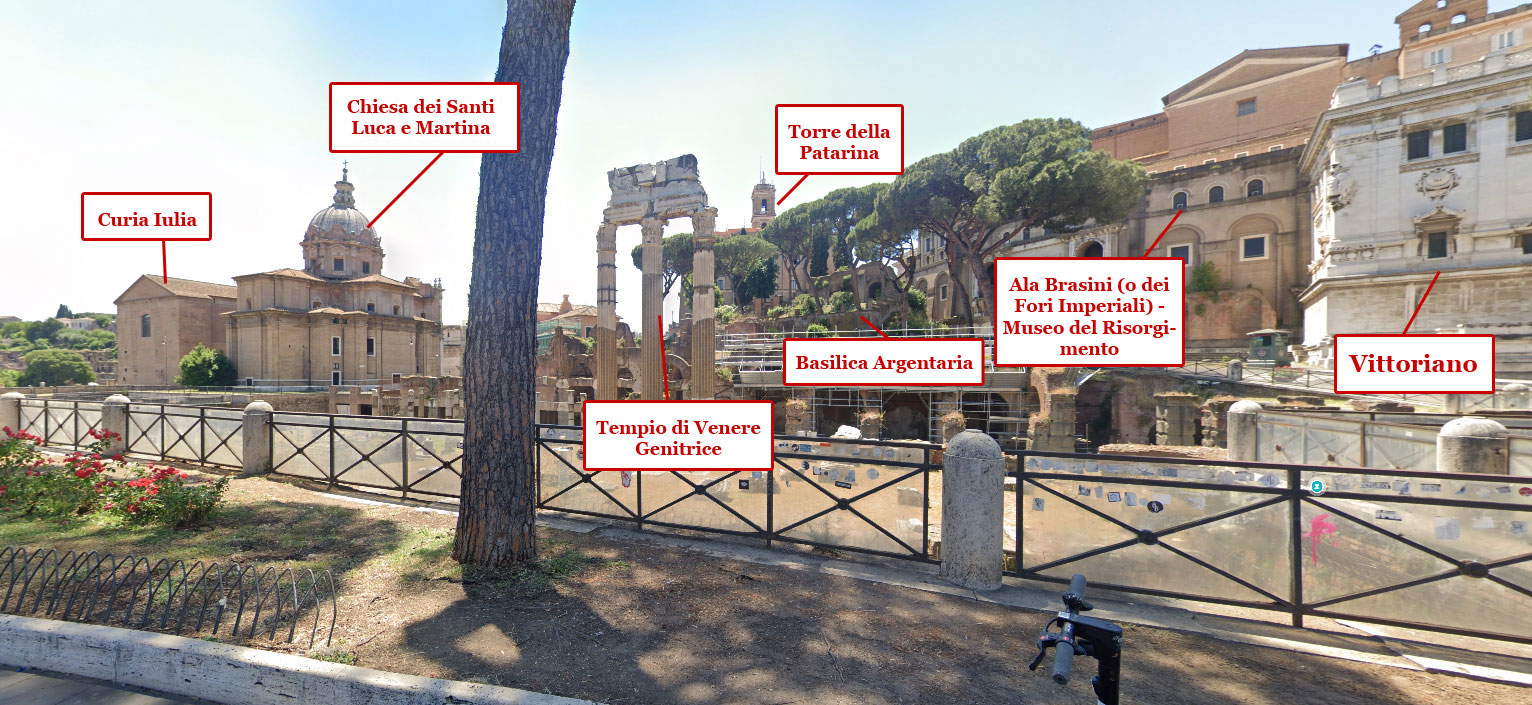 Guide to the monuments of
Guide to the monuments of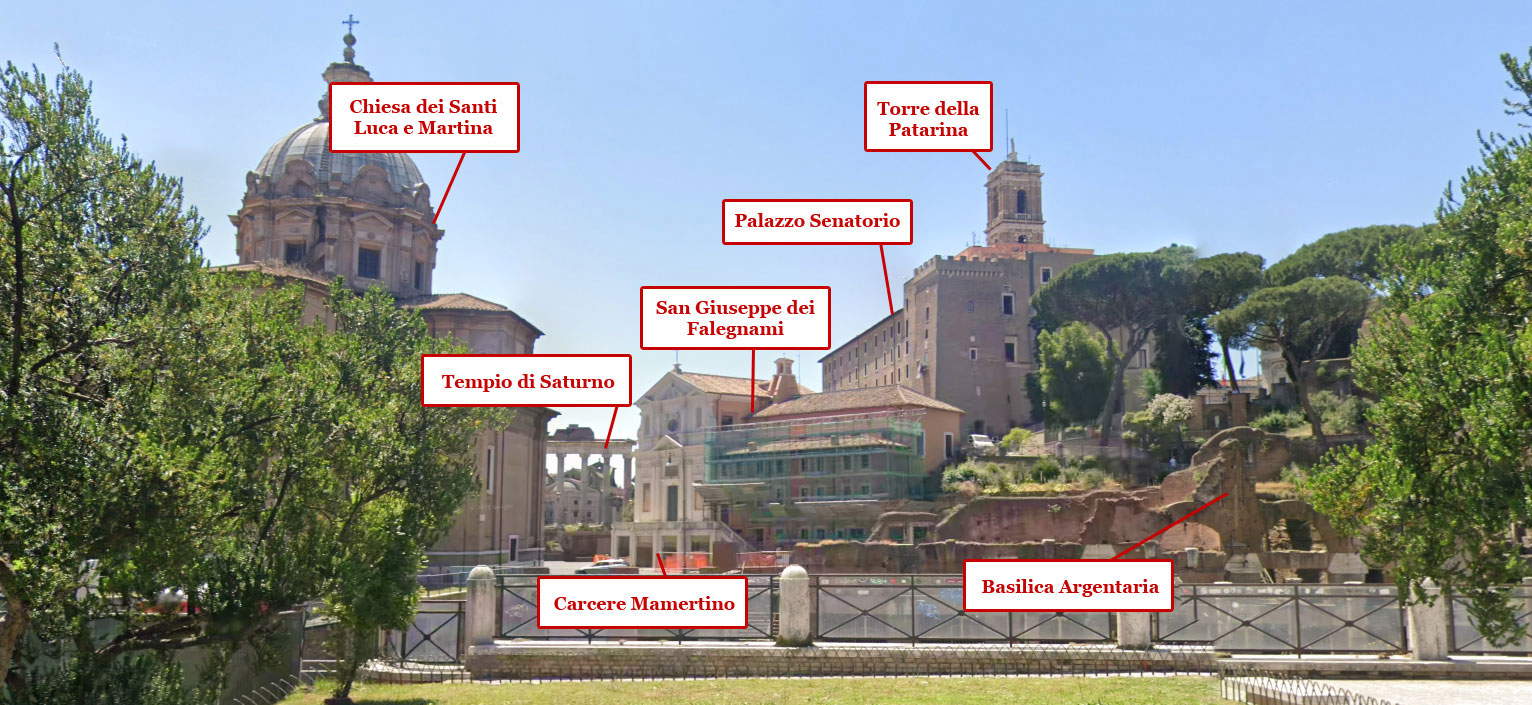 Guide to the monuments of Via dei Fori
Guide to the monuments of Via dei Fori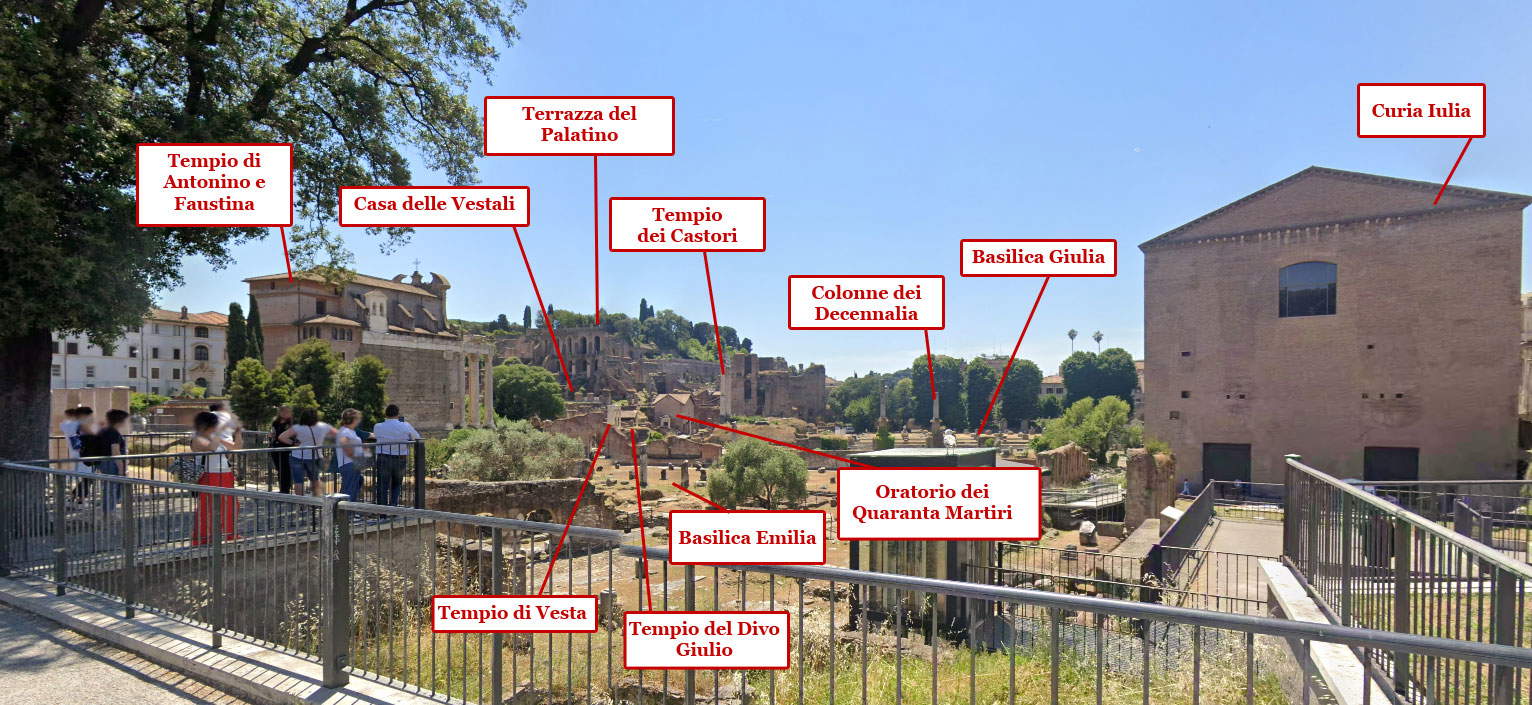 Guide to the monuments of Via dei Fori Imperiali,
Guide to the monuments of Via dei Fori Imperiali,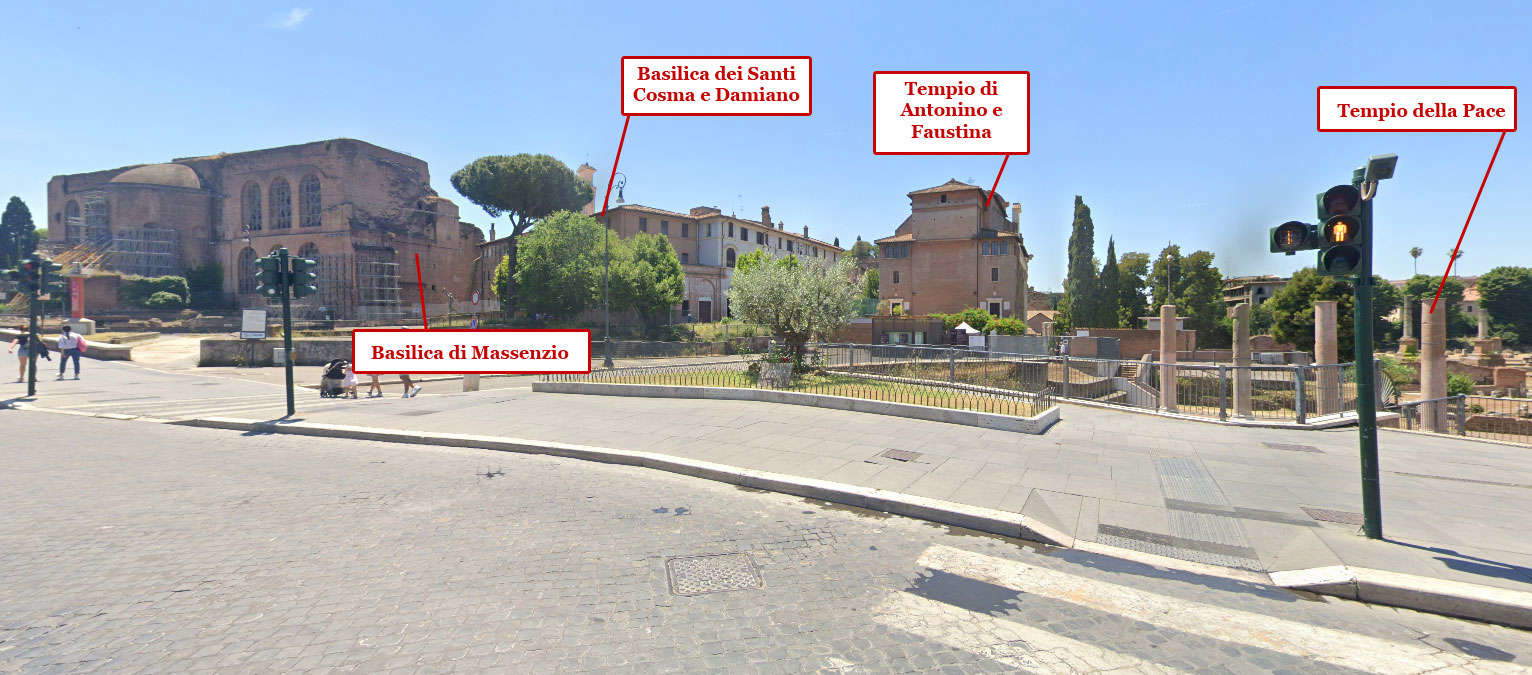 Guide to the monuments of Via dei Fori Imperiali,
Guide to the monuments of Via dei Fori Imperiali,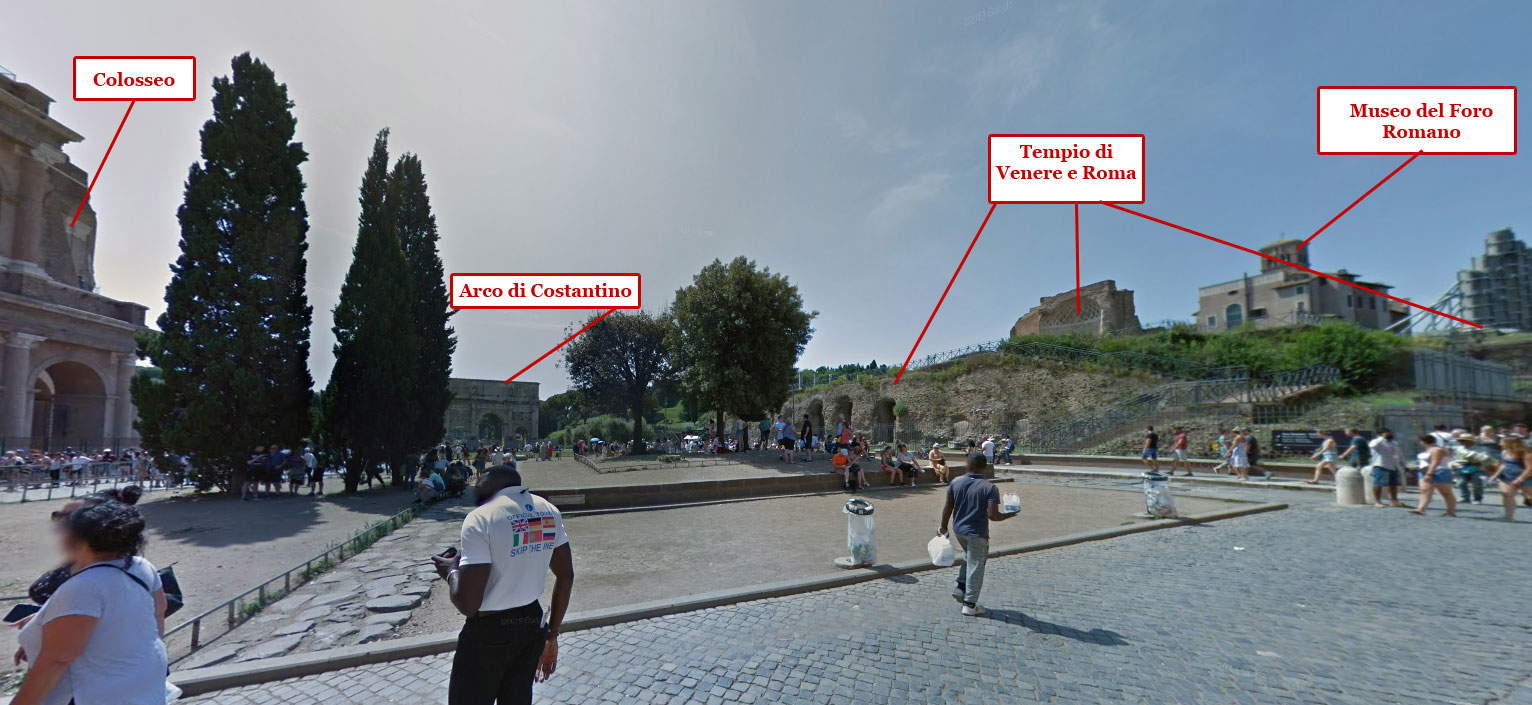 Guide to the monuments of Via dei Fori Imperiali,
Guide to the monuments of Via dei Fori Imperiali,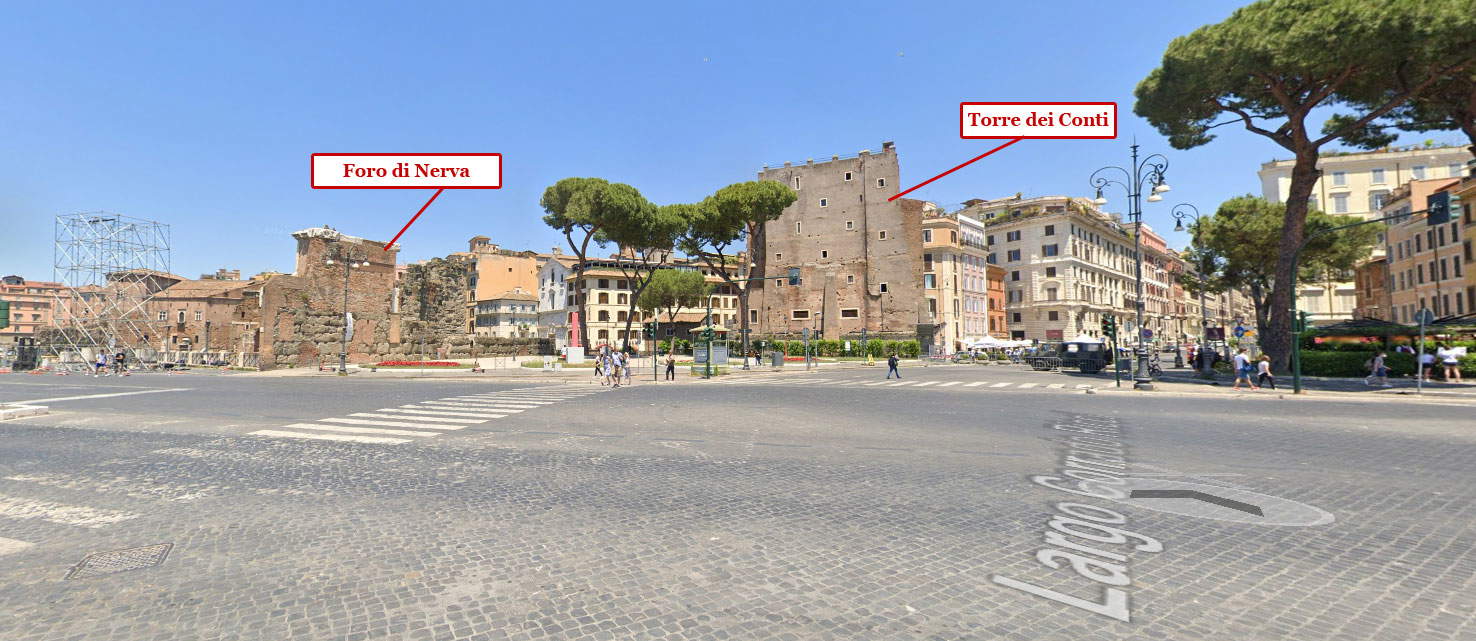 Guide to the monuments of Via dei Fori Imperiali,
Guide to the monuments of Via dei Fori Imperiali,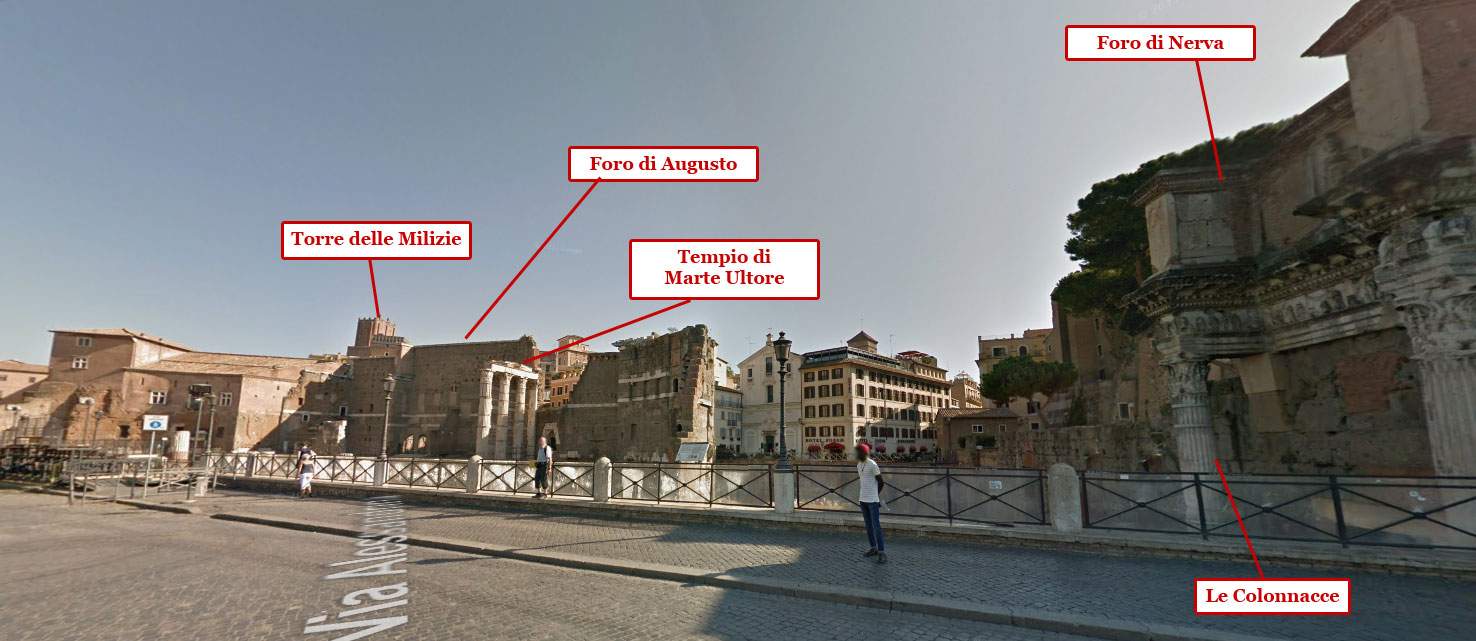 Guide to the monuments of Via dei Fori Imperiali,
Guide to the monuments of Via dei Fori Imperiali,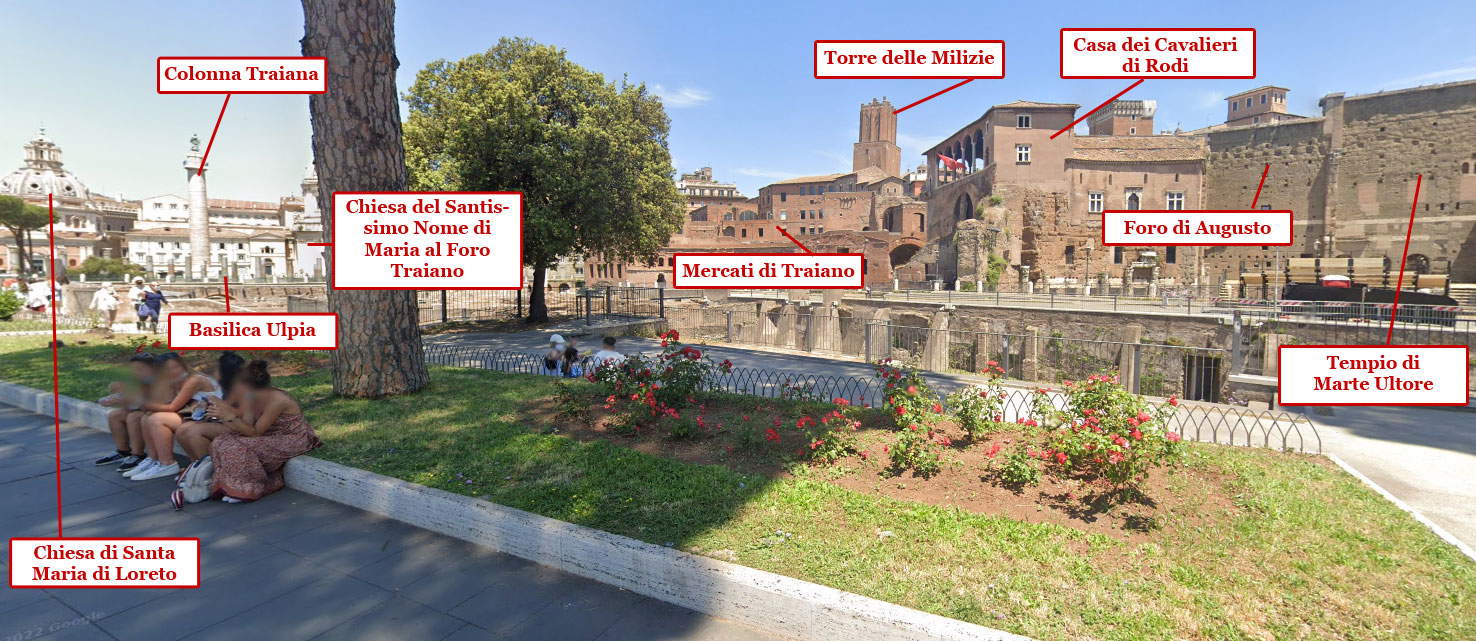 Guide to the monuments of Via dei Fori Imperiali,
Guide to the monuments of Via dei Fori Imperiali,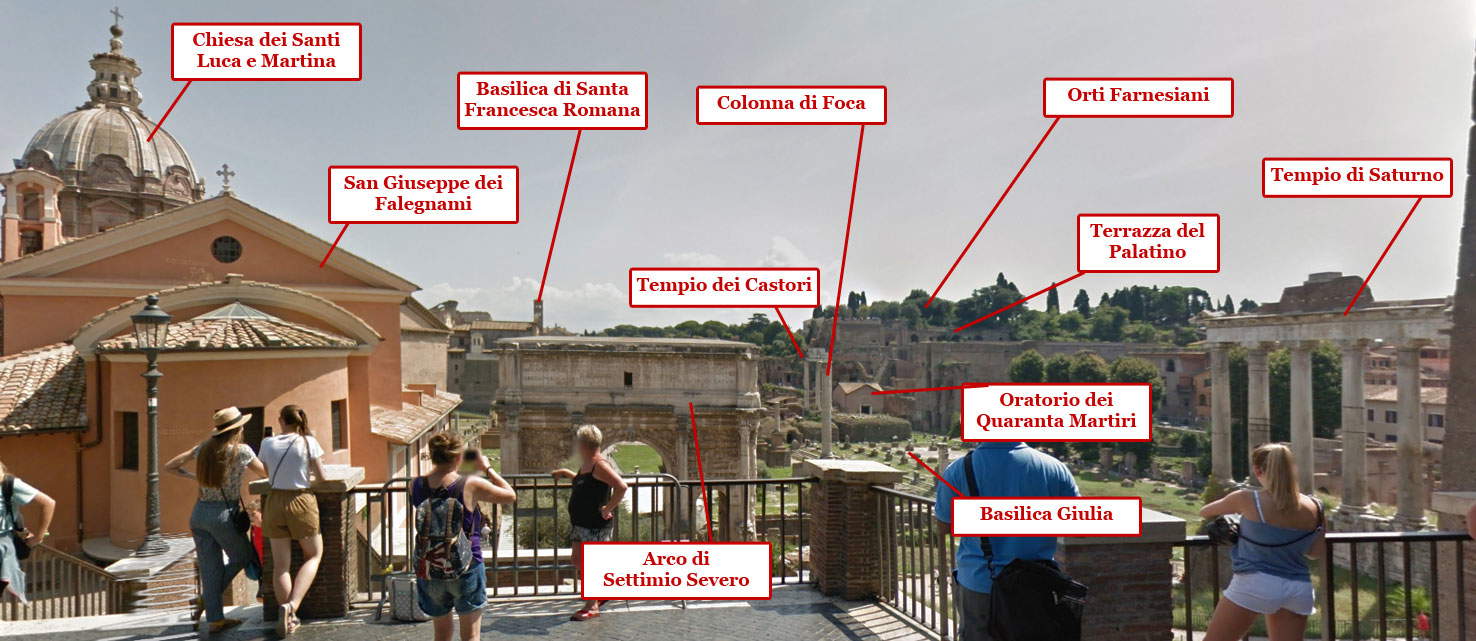 Guide to the monuments of Via dei Fori Imperiali,
Guide to the monuments of Via dei Fori Imperiali,Ala Brasini. A building designed between the 1920s and 1930s by architect Armando Brasini, it is a large exhibition space located next to the Vittoriano (today it is called the “Ala dei Fori Imperiali”). It houses the Central Museum of the Risorgimento and is also a venue for exhibitions.
Basilica Argentaria. It is the ancient seat of the money changers, or “argentarii,” and is part of Caesar’s Forum.
Patarina Tower. The tower that towers over the Palazzo Senatorio, built between 1578 and 1582 to a design by Martino Longhi the Elder to replace the ancient medieval tower. It takes its name from the bell, the “patarina,” which is located here.
Temple of Venus Genetrix. It stands in the center of the northern side of the Forum of Caesar and was erected by Julius Caesar in 46 B.C. to celebrate the goddess Venus, believed to be the ancestor of his family. Three columns remain standing today.
Church of Saints Luke and Martina. The present building dates from the 17th century, and was built on the site of an ancient church founded in the 7th century. Inside are works by Alessandro Algardi, Pietro da Cortona, Antiveduto Gramatica, and Sebastiano Conca.
Curia Iulia. It was built by Julius Caesar in place of the ancient Curia of the 6th century BC and was the ancient seat of the assemblies of the Senate of Rome.
Mamertine Prison. Also known as Carcere Tulliano, this is the oldest prison in Rome (it can be visited) and is located under the church of San Giuseppe dei Falegnami. According to tradition, St. Peter was imprisoned here.
Temple of Saturn. The oldest sacred site in Rome after the Temple of Vesta and the Temple of Jupiter (the remains of the latter are now incorporated into the Capitoline Museums).
San Giuseppe dei Falegnami. Church built in the late 16th and early 17th centuries to a design by Giacomo della Porta, it houses a masterpiece by Carlo Maratta, the Nativity.
Senatorial Palace. Seat of Rome’s City Hall, it stands on Campidoglio Square with its Renaissance facade and double staircase designed by Michelangelo, while on the side facing the Forum you can see the tower of Pope Nicholas V still clearly distinguishable next to the main body of the monument.
Basilica Julia. An ancient civil basilica from the first century BC, it housed courts of law. Only the podium and brick pillars, restored in the 19th century, survive today.
Decennalia Columns. Honorary columns erected to emperors on the occasion of their ten-year reign.
Oratory of the Forty Martyrs. Small church dedicated to the forty Christian soldiers martyred in Armenia under Diocletian’s empire, dates from the 6th century.
Basilica Emilia. An important civic basilica located in the Roman Forum, it dates from the Republican period but was renovated several times in the imperial era. It was an important administrative center as well as a meeting place for citizens.
Temple of the Beavers. Also known as the Temple of the Dioscuri, it is the first Roman temple dedicated to Greek gods and was founded in the fifth century B.C., although in its present form it dates from the time of Tiberius, who had it entirely rebuilt.
Temple of Divus Julius. This is the temple dedicated to Julius Caesar, who was deified after his death.
Temple of Vesta. A small, round temple, it is one of the oldest in Rome and is dedicated to the goddess of the hearth: in fact, it guarded the sacred fire, which had to remain burning at all times.
Palatine Terrace. The terrace of the Palatine Hill on which the Farnesian Gardens are located and which overlooks the Roman Forum.
House of the Vestals. This was the seat of the vestals, the priestesses of the goddess Vesta, who honored in the nearby Temple of Vesta.
Temple of Antoninus and Faustina. A temple dedicated to Emperor Antoninus Pius and his wife Faustina, it is now incorporated into the church of San Lorenzo in Miranda.
Temple of Peace. It is one of the five imperial forums (the others being the Forum of Caesar, the Forum of Augustus, the Forum of Nerva, and the Forum of Trajan). It stood next to the Forum of Augustus; today only a few columns along Via dei Fori Imperiali survive.
Basilica of Saints Cosmas and Damian. This is the first Christian place of worship that arose in the area of the Roman Forum, next to the Temple of Peace. It was founded in the 6th century and rebuilt several times over the centuries. Inside it preserves a large Neapolitan nativity scene from the 18th century.
Basilica of Maxentius. It is the last and largest civilian basilica in ancient Rome. It was built by Maxentius in the early fourth century and then later rededicated to Constantine, who defeated him.
Roman Forum Museum. Run by the Colosseum Archaeological Park, this is the museum dedicated to the history of the Roman Forum and is also known as the Antiquarium Forense.
Temple of Venus and Rome. The largest known temple of ancient Rome, it stood in the space between the Basilica of Maxentius and the Colosseum and was begun under Emperor Hadrian in 121. Very recognizable is the apse of the east cella, the largest surviving piece of the temple.
Arch of Constantine. Located next to the colosseum, it was erected to celebrate Constantine’s victory over Maxentius in 312. By 315 it was already being inaugurated.
Tower of the Counts. Medieval tower located on the site of the temple of the goddess Tellas in ancient times. The present tower, named after the family that built it, dates from the 13th century.
Forum of Nerva. This is one of the five Imperial Forums, the penultimate to be built before the Forum of Trajan.
The Colonnades. These are the only surviving columns of the great portico that surrounded the Forum of Nerva. The nickname is from modern times and the pejorative is due to their state of ruin.
Forum of Augustus. The second imperial forum in chronological order after Caesar’s, it was inaugurated in 2 BC.
Temple of Mars Ultor. Dedicated to the “avenging” god of war (“ultor”), it closed the bottom of the Forum of Augustus.
Tower of the Militia. One of Rome’s ancient medieval towers. Dating back to the 13th century, it is located just behind the Markets of Trajan and slopes slightly toward the Colosseum. It is so named because a military quartering may have been located here in ancient times.
Trajan’s Markets. This is a complex of commercial buildings located next to the Forum of Trajan, easily recognizable by its exedra shape. Entirely open to visitors, it is also home to a museum and temporary exhibitions.
House of the Knights of Rhodes. Located in the Forum of Augustus, it is a building of medieval origin built on the remains of the forum, and has always been home to the Knights of St. John. It still houses the headquarters of the Association of Italian Knights of the Sovereign Military Order of Malta.
Church of the Most Holy Name of Mary at the Forum Trajan. It was built in the 18th century next to the Forum of Trajan. It is distinguished by its recognizable dome.
Basilica Ulpia. Located in the Forum of Trajan, it was built in the early second century AD and at the time of construction was the largest Roman civilian basilica.
Trajan’s Column. It was erected to celebrate the conquest of Dacia by Emperor Trajan. It is located in the Forum of Trajan and its frieze recounts the emperor’s campaign in Dacia.
Church of St. Mary of Loreto. Sixteenth-century church on the edge of the Forum of Trajan.
Column of Phocas. Monumental column with unclear origins: we do not know why it was erected, but we do know that it was dedicated in 608 to the Byzantine emperor Foca.
Farnesian Gardens. Gardens created in the first half of the 16th century above the Palatine Hill at the behest of Cardinal Alessandro Farnese.
Arch of Septimius Severus. It was erected between 202 and 203 in honor of Emperor Septimius Severus.
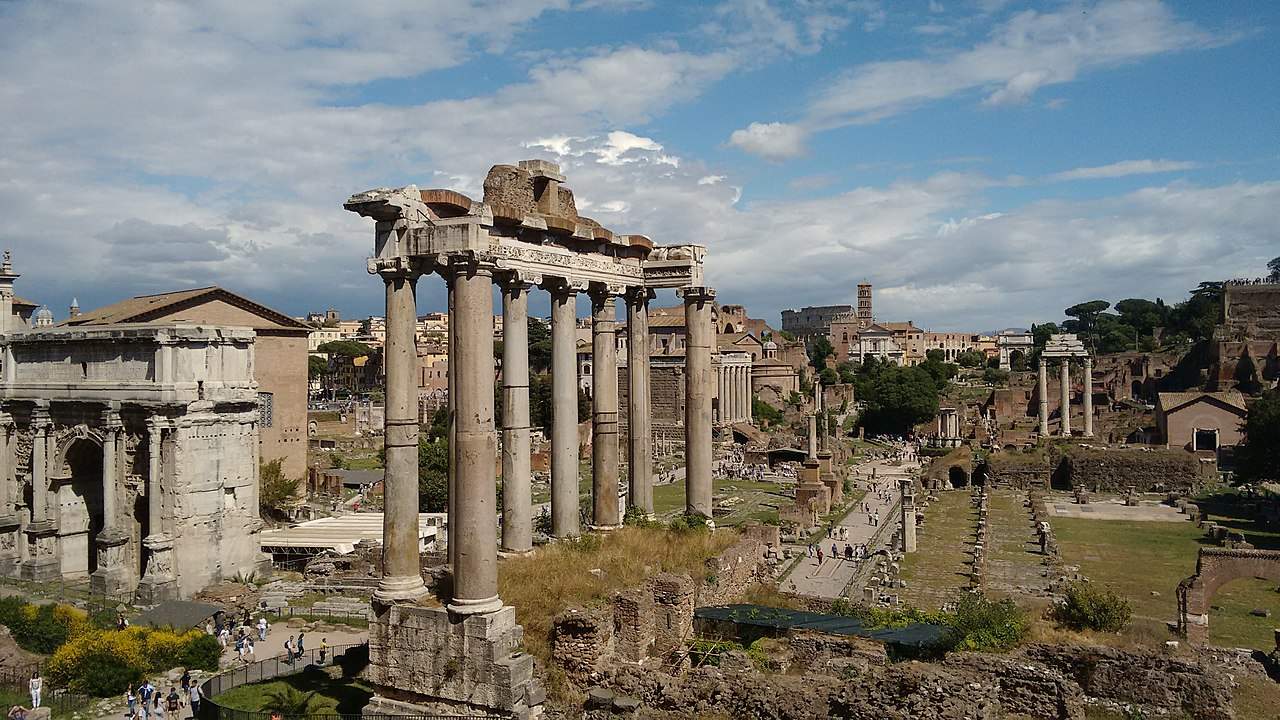
 |
| Rome, definitive guide to the monuments of the Roman Forum and the Imperial Fora |
Warning: the translation into English of the original Italian article was created using automatic tools. We undertake to review all articles, but we do not guarantee the total absence of inaccuracies in the translation due to the program. You can find the original by clicking on the ITA button. If you find any mistake,please contact us.